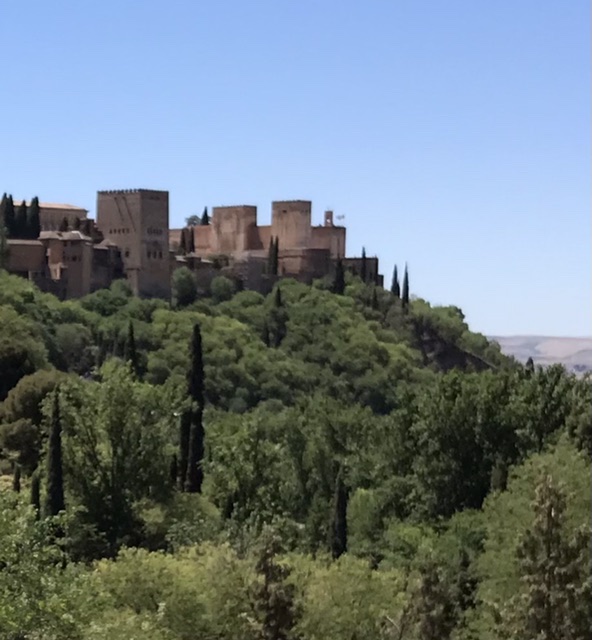Why am I walking here? I am a pilgrim on the Way, of course. I view this walk and a brief stop in Granada as a balancing of my view and understanding of the history of Spain and the world. That is what I tell myself as the heat of the sun bears down upon me.
Everyone is an ocean inside. Every individual walking the street. Everyone is a universe of thoughts, and insights, and feelings. But every person is crippled in his or her own way by our inability to truly present ourselves to the world.
– Khaled Hosseini
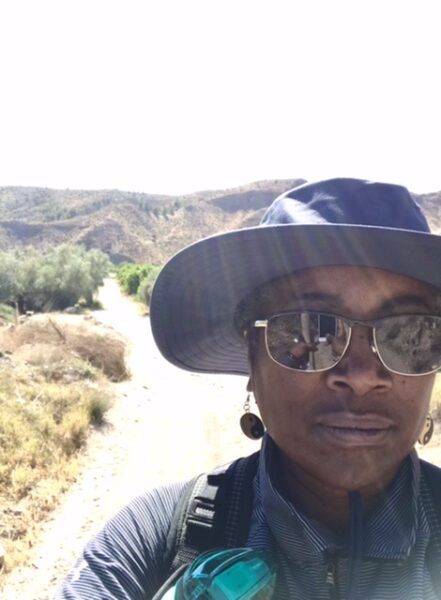
Granada
The Moors ruled parts of Andalucia from the early 8th until the late 15th century – 800 years of history. I did not learn that in my very early education. Instead, I was taught that the Moors were a scourge or human black plague that swept over Europe and Asia, plundering or destroying everything in their path and leaving nothing but mayhem in their wake.
The truth
These tribes from North Africa left a lasting cultural legacy in Al-Andalús or Andalucía.
The influence of the Moors’ culture reached out far beyond Spain. Granada was recognized throughout Europe and North Africa as a center of great learning, art, and architecture. Renowned scientists and philosophers worked and lived in its sphere.
Water
Innovative irrigation systems fed the castle complex of Alhambra and the surrounding areas. This was important in the hot, dry lands of southern Spain.
These systems, laid out by the Romans, were reworked by the Moors who brought water into all the structures via a network of cisterns and channels, fountains and pools.
After they left, the Moors, their culture, history and impact of their contributions to mankind was reinterpreted or ignored by the world.
Hence, my own ignorance about the Moors in Spain.
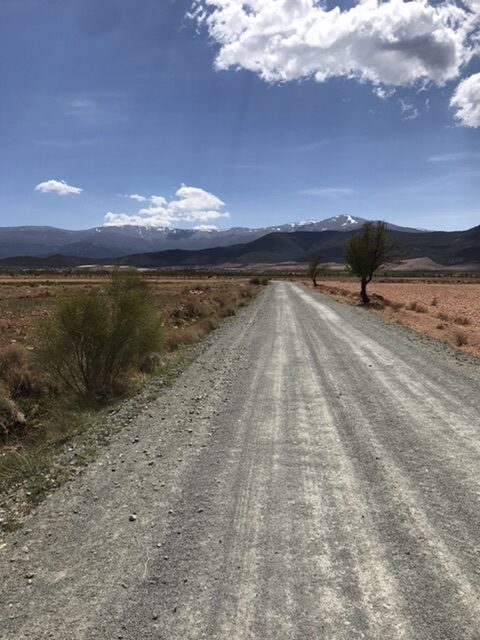
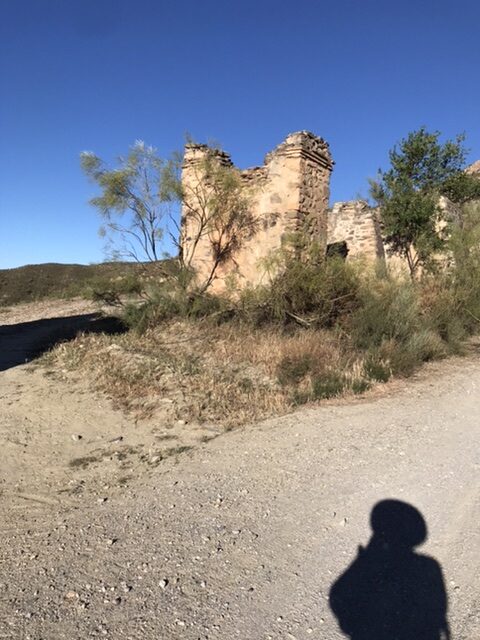
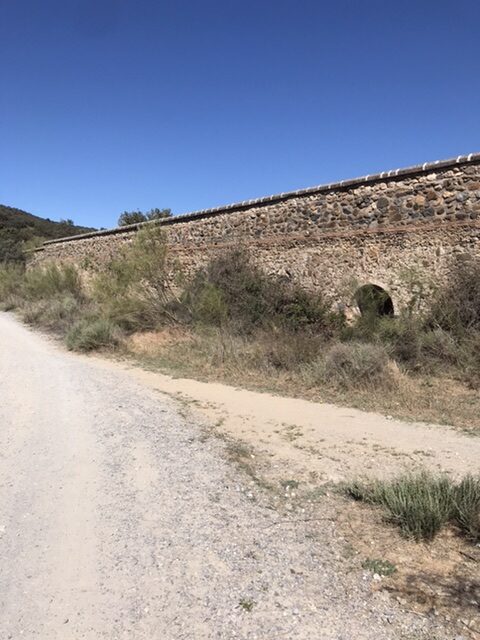
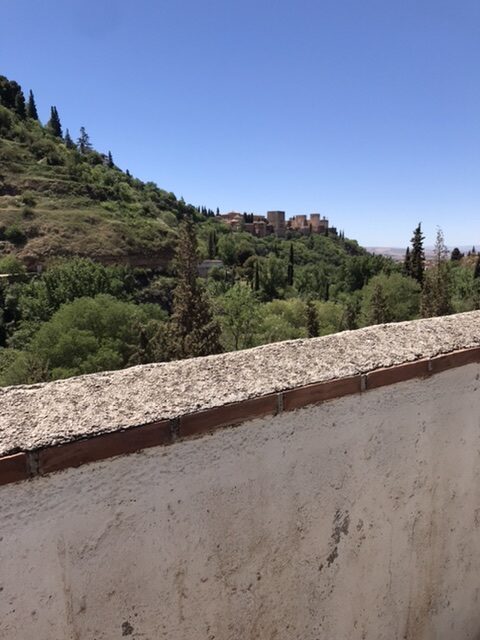
Alhambra
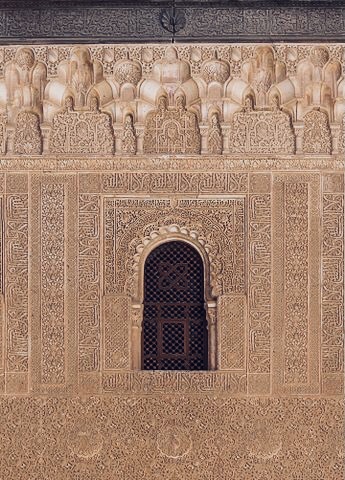
I am a crown on the front of my door:
in me is the West envious of the East.
– Poem on Comares’ Gate
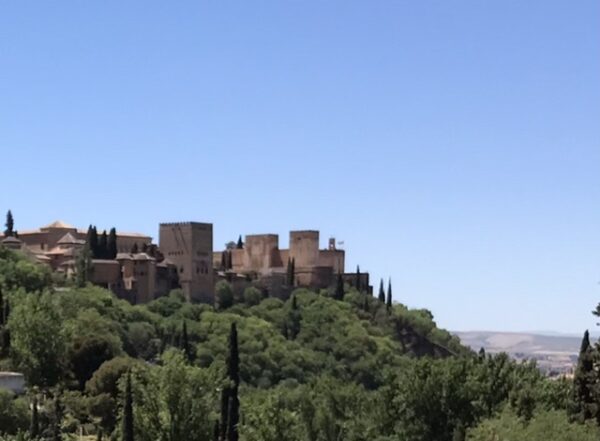
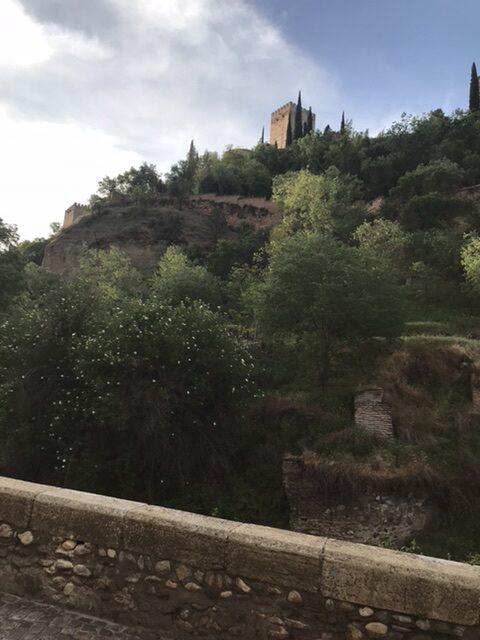
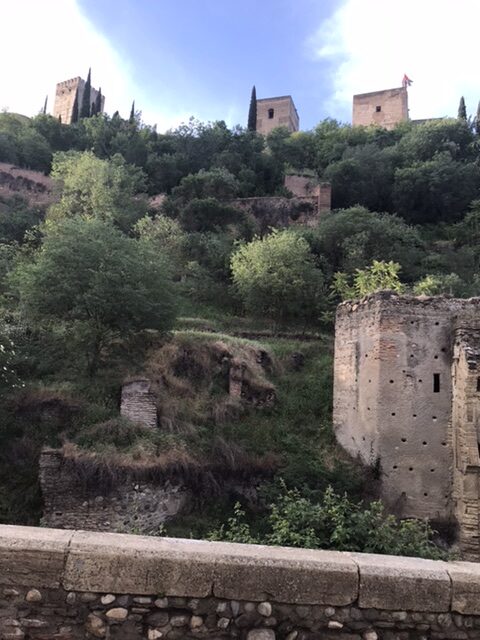
The palace was originally built in 889 CE as a small fortress, but from the 13th century on it was continually rebuilt and expanded by numerous Muslim rulers.
When Islamic rule came to an end in the late 15th century the Catholic Spanish king and queen conquered Granada, making the palace their royal court.
Afterwards, the palace underwent a lot of changes in the Renaissance style. Sadly, the Great Mosque was destroyed and replaced by the Granada Cathedral.
So what does the Alhambra Palace represent today? It is a cultural reserve of centuries of changes by its occupants.
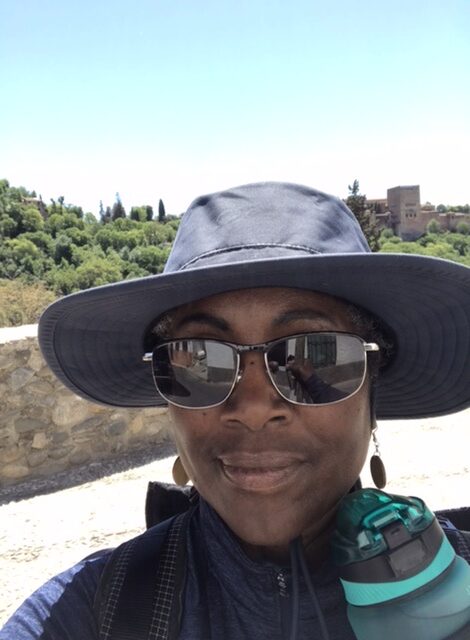
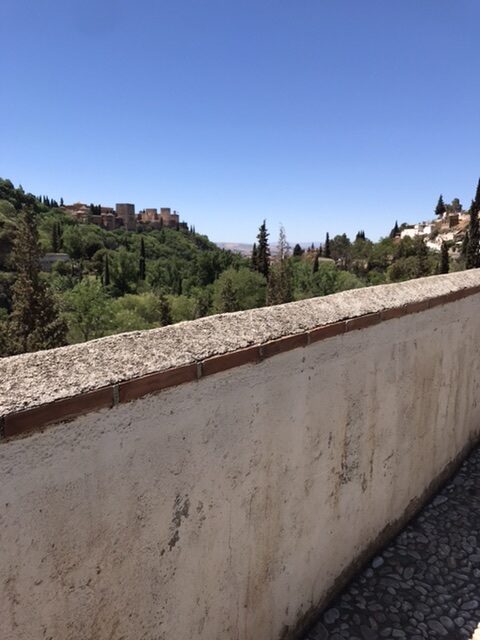
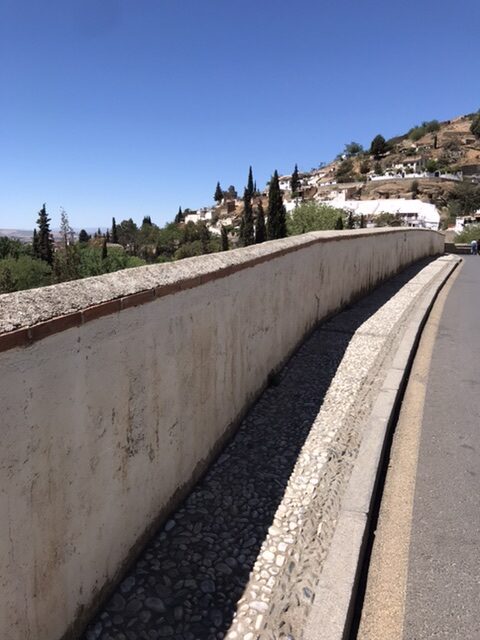
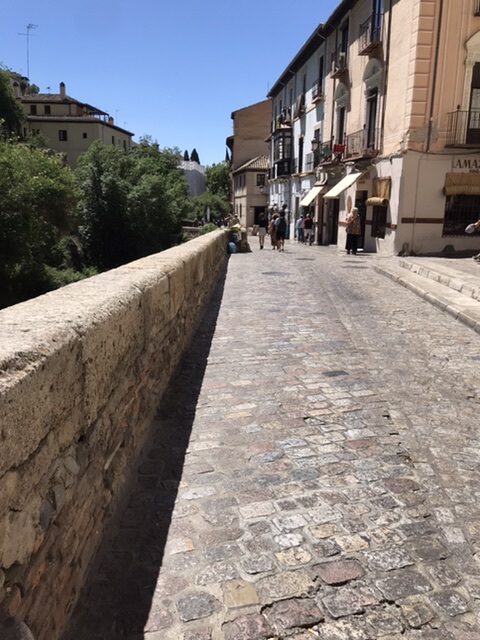
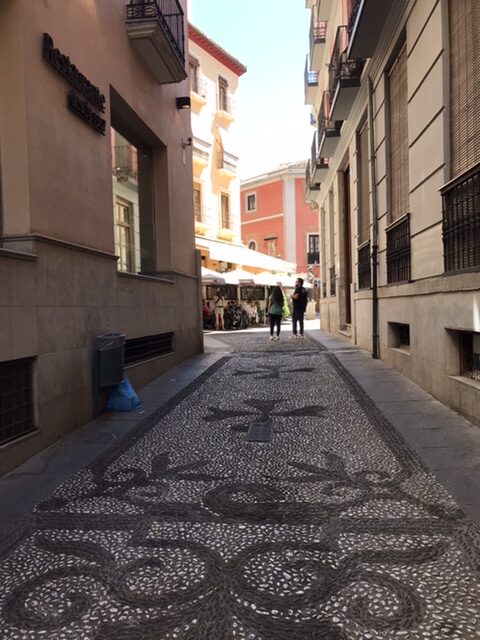
My Impression
Granada is the largest city, so far, that I passed through on my way to Santiago. I did not expect the hordes of tourists, buses, and cars. Tour buses squeeze through the narrow streets – watch out – constantly. Cafes and shops are filled with people from all over the world.
The ancient Albaicin district and Sacromonte draw visitors and historians to Granada. Carrera del Darro, a cobblestone walkway which follows the Darro river, leads to historic buildings and churches. The place has a vibe that reminded me of parts of New York City. I did not expect that.
It was overwhelming. I wanted to get out of this city and return to the calm rhythm of the camino.
Juxtaposition
I stayed at the Monasterio Cistersiense san Bernardo donativo albergue in the heart of Granada located at the foot of Alhambra complex. The monastery is a Catholic community of nuns and belongs to the monastic world through the Cistercian Order. It is a lovely, peaceful place for tired pilgrims to land after another day on the camino.
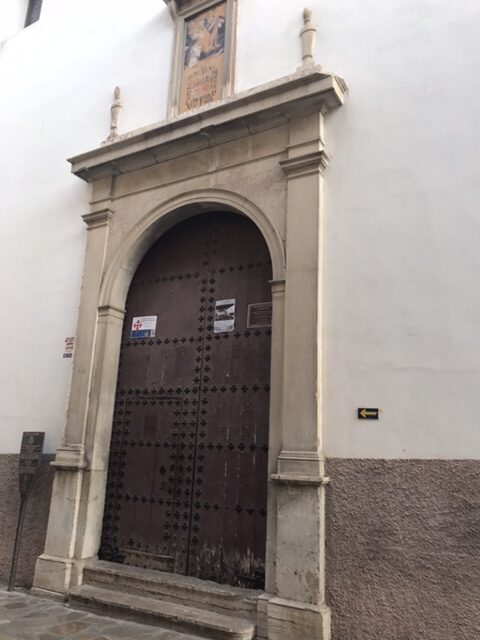
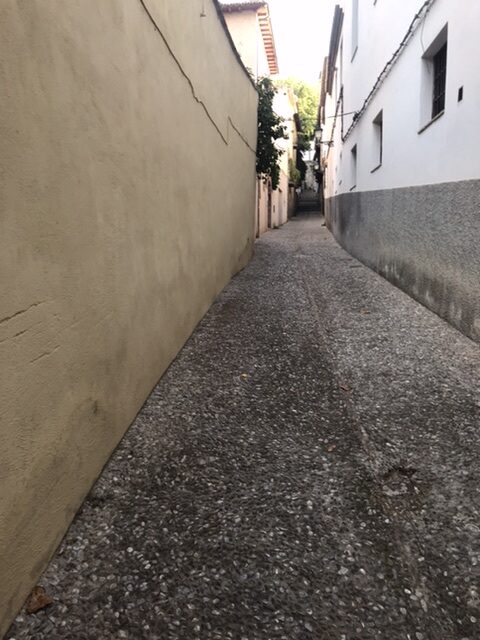
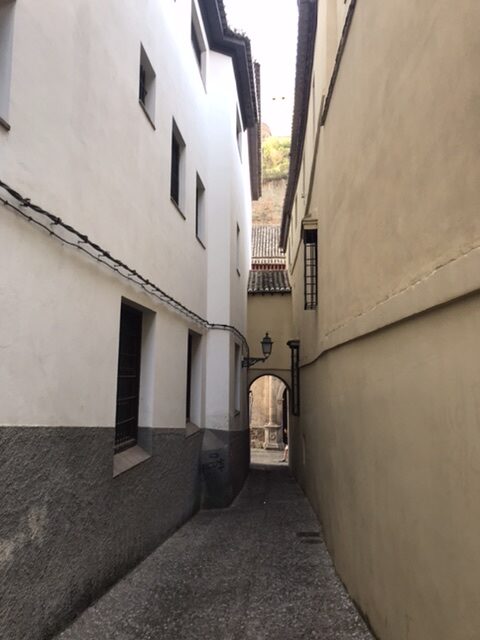
There are many contradictions in life. One is the history of the world. Convenient political alliances were formed amid violent conflicts under the rule of the Moors, Catholics, Romans, other pre-Roman entities and even during civil war.
On this camino – Mozárabe – I see remnants of every group that dominated this place at one time or other. No group was erased. Water (again) and its distribution seems to be an issue that all of these groups tackled. The most efficient innovations were retained and enhanced.
A section of the Mozárabe, the Caliphate route, runs between Granada and Cordoba that traces Muslim heritage. On the Way, towns and villages still have Muslim names. Their roots are on display in the architecture, food, and people’s faces.
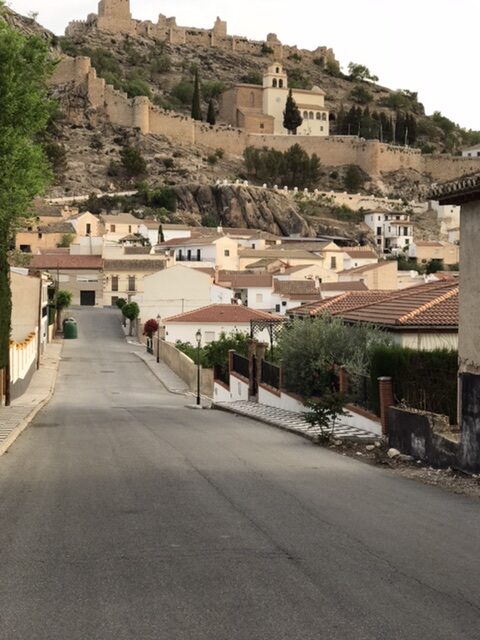
One’s destination is never a place, but a new way of seeing things.
•
This and several posts this summer will chronicle my pilgrimage in Spain where I will walk the 1400 kilometer-long camino Mozárabe. Read my announcement here.

♥️ Shirley J
